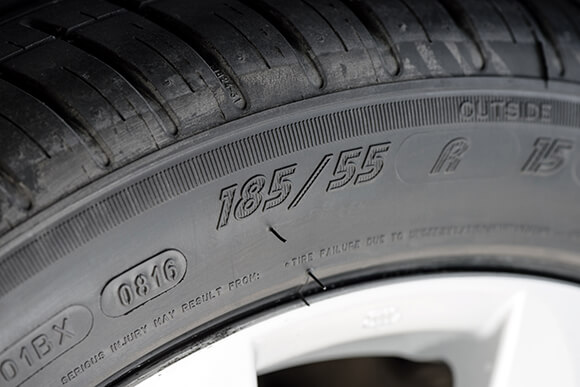Understanding tyre speed ratings and general tyre care
25/04/2022 00:00:00by Mark McKenna25/04/2022 00:00:00Understanding tyre speed ratings and general tyre careBluedrop Services


Drivers in the UK have a legal responsibility to ensure they’re complying with tyre speed ratings and tyre care. Allowing your tyres to wear too thin could land you with a six month ban and a £10,000 fine.
Read on to learn more about your obligations when it comes to your vehicle’s tyres and how you can find out if yours are up to the legal standards.
What are tyre speed ratings?
When it comes to ensuring your vehicle is safe to drive, tyre speed ratings are key. More than just a random letter printed on your tyre’s sidewall, a tyre speed rating indicates the maximum speed a tyre is legally approved to travel at.
Exceed the maximum tyre speed for your tyres, and you risk putting yourself, your passengers, and other motorists in danger, so it’s vital you follow your car manufacturer’s guidance when it comes to tyre speed ratings and tyre care.
How can I find out my tyre’s speed rating?
You can find your tyre’s speed rating on your tyres’ sidewall. The speed rating is the very last alphabetical character that appears in the sequence of numbers and letters.
For example, if the sidewall inscription reads: 205/50 R17 39 V 91 the letter V is your tyre’s speed rating. This would indicate a top legal speed of 149mph.
There are 12 different tyre speed ratings, ranging from 87mph - 186mph. For ease of reference we’ve listed each tyre rating’s max legal speed below:

What happens if I drive with the wrong tyre speed ratings?
Exceeding your max tyre speed can have serious consequences when it comes to safety and should always be avoided. As well as increasing the risk that your tyre might burst and cause a serious accident, fitting the wrong tyres on your vehicle can also void the manufacturer’s guarantee.
If you are involved in an accident, your insurer could refuse to pay out on a claim if it’s found that you’ve been driving with the wrong tyre speed rating, and, as you’ll have broken the law, you could also be subject to criminal prosecution.
What tread depth should my tyres be?
Tyre tread is another area of tyre care you also need to keep a close eye on. While the minimum tread depth required by UK law is 1.6mm, it’s highly advised that you should change your tyres once the tread has reached a depth of 3mm.
This measurement relates to the tyre’s circumference and its central three quarters. One easy way to test whether your tyres need replacing is by positioning a 20p coin within the tread’s shallowest point.
If you can see any part of the coin’s rim it’s a good indication that your tread is approaching the 1.6mm minimum and your tyres need replacing.
What is the penalty for driving with the wrong tyre tread UK?
Driving with tyres that have a depth of less than the legal 1.6mm minimum is a very serious offence in the UK.
For each tyre that’s found to be below the legal limit you’ll be given a £2,500 fine and three points on your license. This means that you stand to lose your licence for 6 months and face a £10,000 fine if all four of your vehicle’s tyres have a tread of less than 1.6mm.What’s the correct tyre pressure?
Another important area of tyre care is tyre pressure. If your pressure is too low the tyres will depreciate faster and your vehicle will be less fuel efficient. Too little pressure can also lead to the vehicle being difficult to handle, which increases the risk of an accident.
Conversely, if your tyres’ pressure is too high this can also have a negative impact on vehicle responsiveness and tyre lifespan, which can lead to replacing your tyres more frequently.
Too much pressure can result in the tyres having less grip on the road surface, which can be especially dangerous in slippery or wet conditions. Your vehicle may also take longer to come to a standstill when you make an emergency stop, and the tyres will wear faster across the centre.
You can find your car’s recommended tyre pressure in the vehicle’s handbook, inside the fuel flap, or on a sticker attached to the door frame. These pressures will take into account weight and load, so you should be mindful to adjust your tyre pressure for different journey types you make.
For more information about tyre care or your legal responsibilities as a driver visit the Driver and Vehicle Standards Agency at gov.uk or for a competitive quote for UK vehicle insurance give our Bluedrop Services brokers a call on 01489 222 156.Return to blog menuWant to find out more about Bluedrop's Motor Fleet Insurance?
Call our friendly team now for the right insurance cover - at the best price
+441489780491
Calls recorded for training and quality.



 Privacy and Cookie Policy
Privacy and Cookie Policy